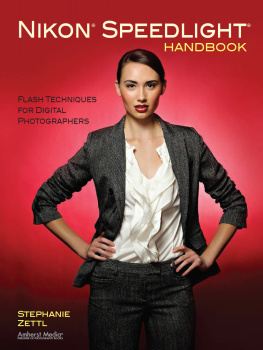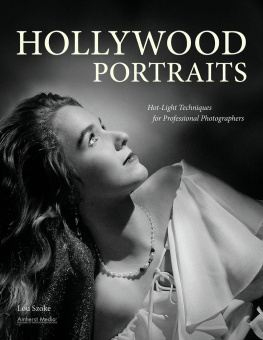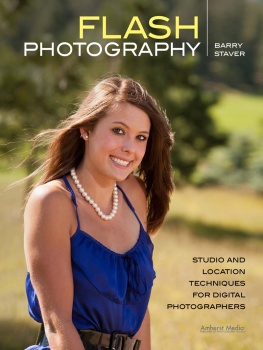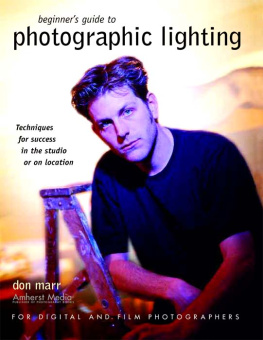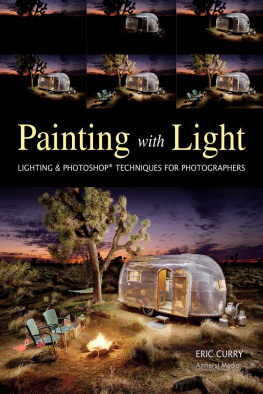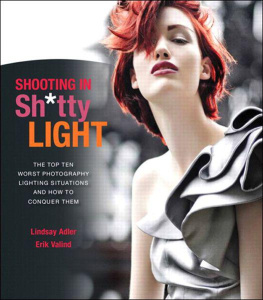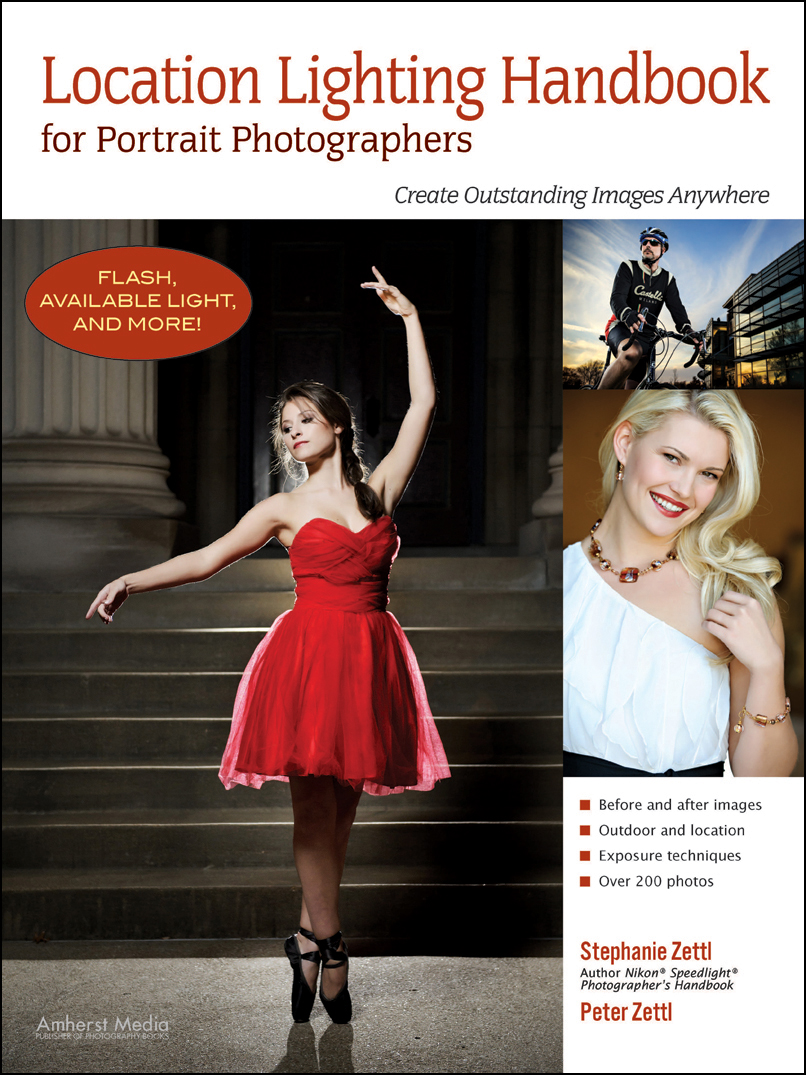
Copyright 2013 by Stephanie Zettl and Peter Zettl.
All rights reserved.
All photographs by the authors.
Published by:
Amherst Media, Inc.
P.O. Box 586
Buffalo, N.Y. 14226
Fax: 716-874-4508
www.AmherstMedia.com
Publisher: Craig Alesse
Senior Editor/Production Manager: Michelle Perkins
Assistant Editor: Barbara A. Lynch-Johnt
Editorial assistance from: Carey A. Miller, Sally Jarzab, John S. Loder
Business Manager: Adam Richards
Marketing, Sales, and Promotion Manager: Kate Neaverth
Warehouse and Fulfillment Manager: Roger Singo
ISBN-13: 978-1-60895-595-4
Library of Congress Control Number: 2012920992
10 9 8 7 6 5 4 3 2 1
No part of this publication may be reproduced, stored, or transmitted in any form or by any means, electronic, mechanical, photocopied, recorded or otherwise, without prior written consent from the publisher.
Notice of Disclaimer: The information contained in this book is based on the authors experience and opinions. The authors and publisher will not be held liable for the use or misuse of the information in this book.
Check out Amherst Medias blogs at: http://portrait-photographer.blogspot.com/
http://weddingphotographer-amherstmedia.blogspot.com/
Contents
- PART ONE:
UNDERSTANDING THE LIGHT - PART TWO:
SEEING AND SHAPING THE LIGHT - PART THREE:
CREATING AND MODIFYING THE LIGHT - PART FOUR:
PROBLEM-SOLVING ON LOCATION




Guide
S tephanie and Peter Zettl are photographers from St. Louis, Missouri. Stephanie got her start as a newspaper photographer and enjoyed photographing people and their relationship to the events around them. In 2003, she started her own studio specializing in documentary wedding and portrait photography. Her husband, Peter, later joined her as a photographer and business partner. Together theyve developed their business into one of the top wedding studios in St. Louis, winning many local and international awards.
Stephanie is a respected lecturer and mentor who enjoys watching new photographers improve their skills. Education is important to the Zettls, and they believe that photographers should invest in studying both the technical and creative sides of photography.
More of Stephanie and Peters work can be found on their web site at www.zettlphoto.com.

Photo by Stacey Doyle Photography.
There are a lot of people we need to thank for our photography success. We would have never been able to accomplish so much without the love, support, and help of our family, friends, and mentors. Our sincere thanks for all you have done.
There are a few people who helped us with the production of this book whom wed like to specifically thank.
To Ray Kersting and Schillers Camera Store for always being willing to help and being so supportive of our career.
To Ray Nason of Mac Group who was instrumental in making good things happen for this book.
To Alecia Hoyt for helping me with models and being supportive on so many levels. I had a great time playing!
To Phil Bradon for taking the time and energy to explain fascinating technical information.
To Dave Junion and After Dark Education for setting an example of what photo education should be likeplay hard and shine bright.
Special thanks also to Rick Weinstein, Amber McCoy, and Lindsay Silverman.
To those photographers that have taught and helped us see the light, shape the light, and create the lightDavid Williams, Chuck Arlund, Tony Corbel, Greg Gibson, Jerry Ghionis and John Michael Cooper.
To all of our wonderful clients who invited us into their lives to document them.
To our fabulous models who patiently sat for photos for this book.
To Tamara Tungate, DShannon Llewellyn, and Ali Lee for all your help on hair and makeup for our models.
D igital photography heralded the beginning of a new age, just as the introduction of color negative film did in 1959. Dramatic change in any industry produces benefits and problems that can be immediate but often take longer to surface.
With the advent of digital cameras, we photographers suddenly had an instant image of our subject, indicating to us the successes or failures of our exposure and lighting. Adobe Photoshop put the darkroom under our fingertipswithout the mess, chemicals, and safe light. Epson pigment-ink printers and the makers of superb papers sealed the deal for so many of us.
And has this improved our photography? There is no doubt that the instant feedback has helped many, and in the case of experimental photography and photojournalistic-styled images, we have been set free from the manacles of film cost and processing. The myriad controls in Photoshop have made us think anything is savable, or even that anything can be made into a masterpiece of visual communication.
The profusion of visual imagery on the Internet and social media sites unfortunately tells us otherwise. So many choices in posing, composition, and particularly lighting have largely been marginalized. So many people post Love this image to so many poor examples.
Now, the big complaint from many is The guests at the wedding had better cameras than I had, and many photographers are coming to believe that it actually matters. And why? Regardless of its sophistication, a camera is merely a recording device. My possession of a professional standard electric guitar does not grant me the ability to play like Eric Claptonand no one would believe that mere possession of the instrument will do that without ability, practice, and talent.
Even when we have camera implants inside our eyeballs, our knowledge of lighting will be the thing that sets professional photographers apart from the rest. Lighting, after content, has been the single most important factor in any image that has defined the peak of photography. In so many cases, it becomes more important than the content.
Stephanie and Peter Zettl have taken the time and trouble to put tremendous research and effort into identifying the types of light, how to modify it, and its effect in a clear, concise, and well-illustrated manner that makes the learning process pleasurable. This is a book you can read once and then have on hand for a very long timeits a constant read.
Knowledge of light, and the ability to use it and modify it, has always set photographers apart from each other. Study this book and set yourself apartnot with gimmicks, but with a quality of light.
David Anthony Williams, M.Photog. FRPS ALPE
TorontoJanuary 2013



